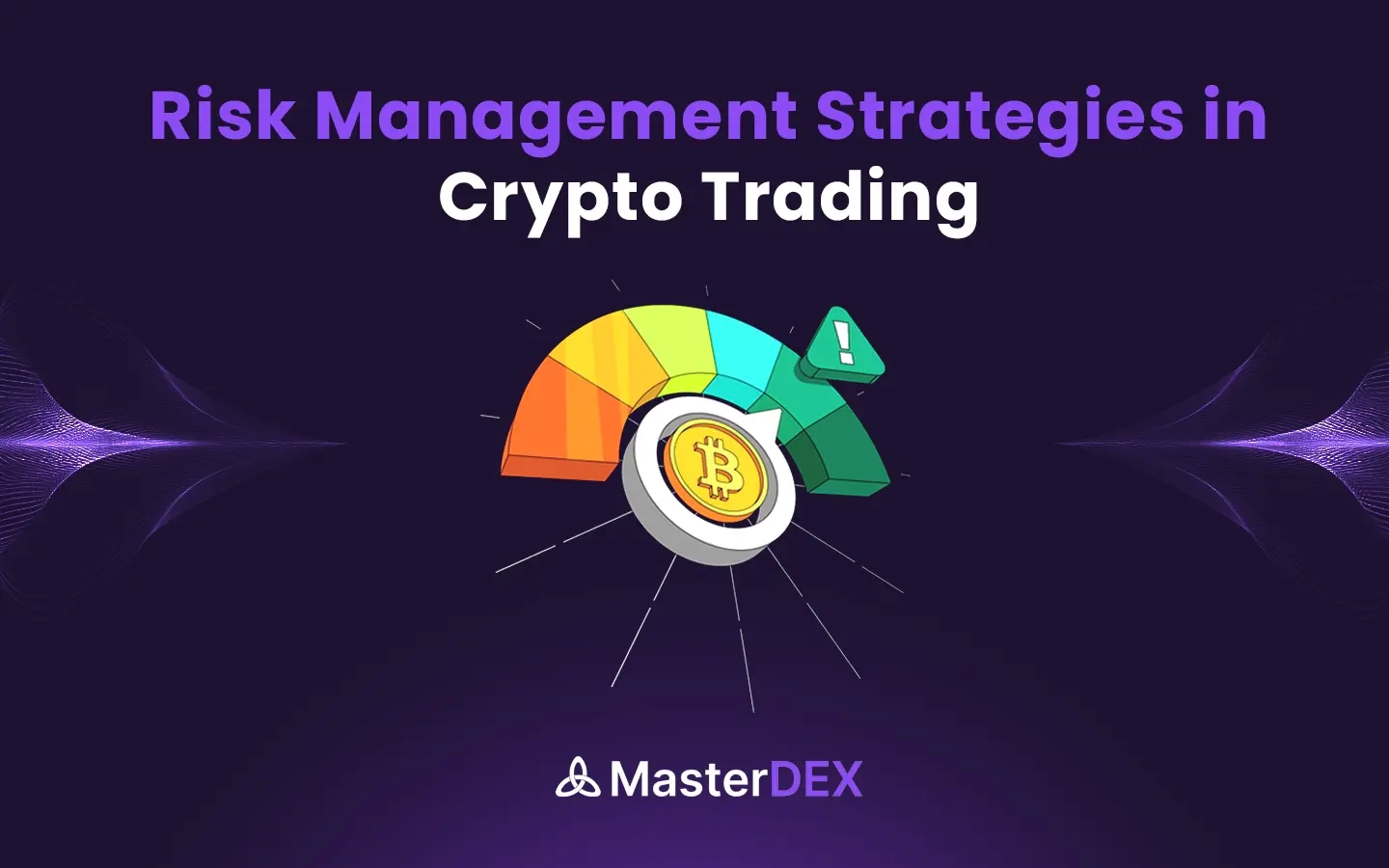Risk management in crypto trading is the practice of identifying potential threats to your capital and taking steps to limit their impact. It involves analyzing the risks associated with trading digital assets and applying strategies to mitigate exposure to losses, protect profits, and ensure long-term sustainability.
Because the cryptocurrency market is highly volatile and influenced by unpredictable factors such as price fluctuations, regulatory changes, or cybersecurity threats—traders who ignore risk management can face severe consequences. Without a structured approach, even skilled traders may suffer large losses or fall into emotional decision-making that undermines their success.
Good risk management is not only about defense. It’s also a strategic tool for improving results. By setting clear limits, managing position sizes, and following consistent rules, traders can increase their chances of achieving steady returns while staying within their comfort zone for risk. In short, risk management in crypto trading is essential for staying in the game. It helps traders make thoughtful decisions, preserve their capital during market downturns, and take advantage of opportunities with greater confidence.
Table of Contents:
ToggleCommon Risks in Crypto Trading
Understanding the core risks associated with cryptocurrency trading is crucial for avoiding losses and making informed decisions. Below are the most fundamental risks that every trader, beginner or expert, should be aware of:
1. Price Volatility
Crypto markets are extremely volatile. Prices can surge or drop dramatically within hours due to news, speculation, or market sentiment. While volatility can present profit opportunities, it can just as quickly lead to severe losses if not managed properly.
2. Market Manipulation
Due to limited regulation, crypto markets are often manipulated through tactics like pump-and-dump schemes, spoofing, or whale activity. These practices distort real market signals, tricking unsuspecting traders into bad decisions.
3. Regulatory Uncertainty
Laws around crypto are still evolving worldwide. Sudden government bans, tax regulations, or legal crackdowns can affect prices and restrict access to exchanges. Traders must stay informed and select projects with transparent and compliant teams.
4. Technological Vulnerabilities
Hacks, phishing attacks, and bugs in smart contracts pose a serious risk. Security failures can lead to a loss of funds. Using cold wallets, strong passwords, and reputable platforms helps reduce these risks significantly.
5. Psychological Biases
Emotions like fear, greed, and FOMO often drive impulsive decisions. Many traders fall into overtrading or chasing losses. A disciplined, strategy-based approach is essential to avoid emotional traps.
6. Cybersecurity and Hacking
Crypto holdings are common targets for cybercriminals. Exchanges, wallets, and DeFi protocols are all at risk. Traders should protect their assets with two-factor authentication (2FA), hardware wallets, and good digital hygiene practices.
7. Project and Technology Risks
Not all crypto projects are credible. Many fail due to weak fundamentals, poor management, or lack of real-world use. Deep research into project teams, whitepapers, and long-term viability is critical before investing.
8. Liquidity Risks
Some coins, especially those with low market capitalization or limited recognition, may lack liquidity. This makes it hard to sell them without affecting price, or at all, during a downturn. Stick to assets with strong trading volume and exchange listings.
Risk Management Strategies in Crypto Trading
Managing risk is not just about protecting your capital. It’s about creating a system that allows you to make rational, consistent decisions in a market defined by unpredictability. Below are the most effective and nuanced strategies every crypto trader should master:
1. Portfolio Diversification: Don’t Put All Your Coins in One Wallet
Diversification is the foundation of risk management in crypto trading. In crypto, this means allocating capital across various types of assets: layer-1 coins, DeFi tokens, stablecoins, and potentially even tokenized real-world assets. By doing this, you reduce your exposure to the failure or decline of any one asset or sector.
But diversification should not stop at crypto. Smart investors integrate crypto as a portion of a broader portfolio that includes traditional assets like equities, bonds, or even commodities like gold. This cross-asset diversification serves as a hedge against systemic risks in the crypto market.
Crucially, effective diversification isn’t just about quantity, it’s about quality. Understanding the correlation between assets is vital. For example, many altcoins move in sync with Bitcoin. Spreading funds across coins with highly correlated price movements does little to reduce actual risk. Study historical price behavior and correlations before allocating capital.
2. Use of Stop-Loss and Take-Profit Orders: Set the Rules, Then Stick to Them
Stop-loss orders automatically close a position once it hits a predetermined loss threshold. This protects you from catastrophic drawdowns during sharp market downturns or unexpected events. Similarly, take-profit orders lock in gains once your target level is hit, helping you exit without second-guessing.
The effectiveness of these tools lies in how intelligently they’re placed. Avoid setting stop-losses too tight, which might trigger due to ordinary volatility, or too loose, which can let losses spiral. Use technical analysis to place these orders around support/resistance levels or volatility bands.
Ultimately, these orders enforce discipline and remove emotion from your decisions, arguably the most underrated benefit in crypto trading.
3. Position Sizing: Bet Small to Win Big
How much of your portfolio you allocate to a single trade, or your position size, can make or break your performance. Position sizing is the bridge between your risk appetite and your portfolio’s long-term sustainability.
A common rule is to never risk more than 1–2% of your portfolio on a single trade. This doesn’t mean you can’t go big when conviction is high, but rather that you must always be able to survive another day in the market.
Risk per trade should be calculated based on both technical stop-loss placement and overall portfolio capital. This keeps your exposure balanced relative to market volatility and ensures consistent capital preservation.
4. Technical and Fundamental Analysis: The Two Pillars of Informed Trading
Technical analysis helps you interpret market sentiment and momentum. By studying chart patterns, price levels, and indicators such as RSI, MACD, and Bollinger Bands, you can spot high-probability entry and exit points. This is essential for short-term traders and swing investors.
Fundamental analysis dives deeper, focusing on the long-term value of a crypto project. It includes evaluating the team, tokenomics, utility, adoption metrics, roadmap, and regulatory environment. This is crucial for identifying strong long-term investments and avoiding overhyped or fraudulent projects.
Relying on both methods gives you a balanced view: technicals for timing and fundamentals for conviction.
5. Security Practices: Risk Isn’t Just in Price
Many traders ignore the fact that the largest risk in crypto isn’t always market-based, it’s often security-based. Whether it’s exchange hacks, phishing scams, or lost private keys, security lapses can wipe out portfolios instantly.
Here’s how to mitigate them:
- Use reputable, regulated exchanges that comply with security standards and transparency practices.
- Enable two-factor authentication (2FA) on all accounts.
- Use hardware wallets or cold storage for long-term holdings.
- Stay updated on common phishing tactics and social engineering attacks.
- Never share your seed phrase or private keys with anyone.
A secure setup gives you peace of mind and allows you to focus on trading, not worrying about theft or loss.
6. Clear Investment Goals and Risk Appetite: Know Your Why and Your Limits
Risk management in crypto trading begins with knowing yourself. Define your investment goals, whether it’s long-term wealth accumulation, income through swing trading, or speculative short-term gains. This will determine your trading strategy and acceptable risk level.
Are you comfortable watching your portfolio drop 20% overnight? Or would that force you into a panic sell? Answering such questions will help shape your asset allocation, leverage use (if any), and trading style.
Without clarity on your goals and limits, even the best strategy can fail under pressure.
7. Emotional Control and Psychological Discipline
Crypto trading is intensely emotional. Greed, fear, FOMO (fear of missing out), and FUD (fear, uncertainty, doubt) all cloud judgment. Emotional decisions often lead to buying tops and selling bottoms.
The antidote is a well-documented trading plan and the discipline to follow it regardless of market noise. Keep a trading journal. Review your trades regularly. Learn from losses instead of reacting to them emotionally.
Avoid impulsive decisions. Sleep on big moves. Remember: reacting is easy, but restraint is powerful.
8. Keep Learning and Accepting: The Market Evolves, So Should You
The crypto industry moves fast. New technologies, tokens, trends, and regulations emerge constantly. Staying informed is not optional. Follow credible analysts, subscribe to market newsletters, join forums and communities, and read research papers when possible.
Learning also includes reviewing your past trades and performance. What worked? What didn’t? Adapt and refine your strategies accordingly.
Even the most seasoned traders remain students of the market. Continuous learning is a core component of risk management in crypto trading
Common Risks in Crypto Trading and How to Manage Them
| Risk Type | Description | Risk Management Strategy |
| Price Volatility | Rapid price swings can lead to sudden gains or severe losses. | Use stop-loss/take-profit orders, diversify, and avoid overexposure to any single asset. |
| Market Manipulation | Artificial price moves by whales or bad actors mislead traders. | Avoid hype-driven trades, follow volume analysis, and use technical indicators for signals. |
| Regulatory Uncertainty | Laws vary by country and can change abruptly, affecting market access. | Stay updated on regulations, choose compliant platforms, and invest in transparent projects. |
| Technological Vulnerabilities | Hacks, bugs, or system failures can lead to asset loss or trading disruption. | Use cold wallets, enable 2FA, choose secure exchanges, and avoid suspicious links. |
| Psychological Biases | Emotions like greed or FOMO lead to irrational decisions. | Stick to a trading plan, maintain a journal, and base decisions on data, not emotion. |
| Cybersecurity Threats | Wallets, exchanges, and users are frequent targets for hacking. | Secure accounts, use hardware wallets, and avoid sharing sensitive data. |
| Project/Technology Risks | Some crypto projects lack real use or are poorly managed. | Research team, roadmap, tokenomics, and community trust before investing. |
| Liquidity Risks | Illiquid assets are harder to sell, especially during downturns. | Trade well-known tokens with high volume and avoid overexposure to obscure altcoins. |
Conclusion
In the fast-moving world of cryptocurrency trading, risk is an unavoidable part of the game, but how you manage it can make all the difference. Successful traders don’t simply chase profits; they protect their capital with discipline, foresight, and well-tested strategies.
From diversifying portfolios and setting stop-loss orders to conducting proper research and controlling emotions, risk management is the foundation of sustainable trading. It transforms unpredictable market behavior into manageable challenges and helps traders navigate volatility with clarity and confidence.
Ultimately, mastering risk management in crypto trading isn’t just about avoiding losses, it’s about creating the conditions for long-term growth. Whether you’re a beginner or an experienced investor, adopting smart risk practices will help you make better decisions, reduce emotional stress, and stay consistent in the face of uncertainty.



